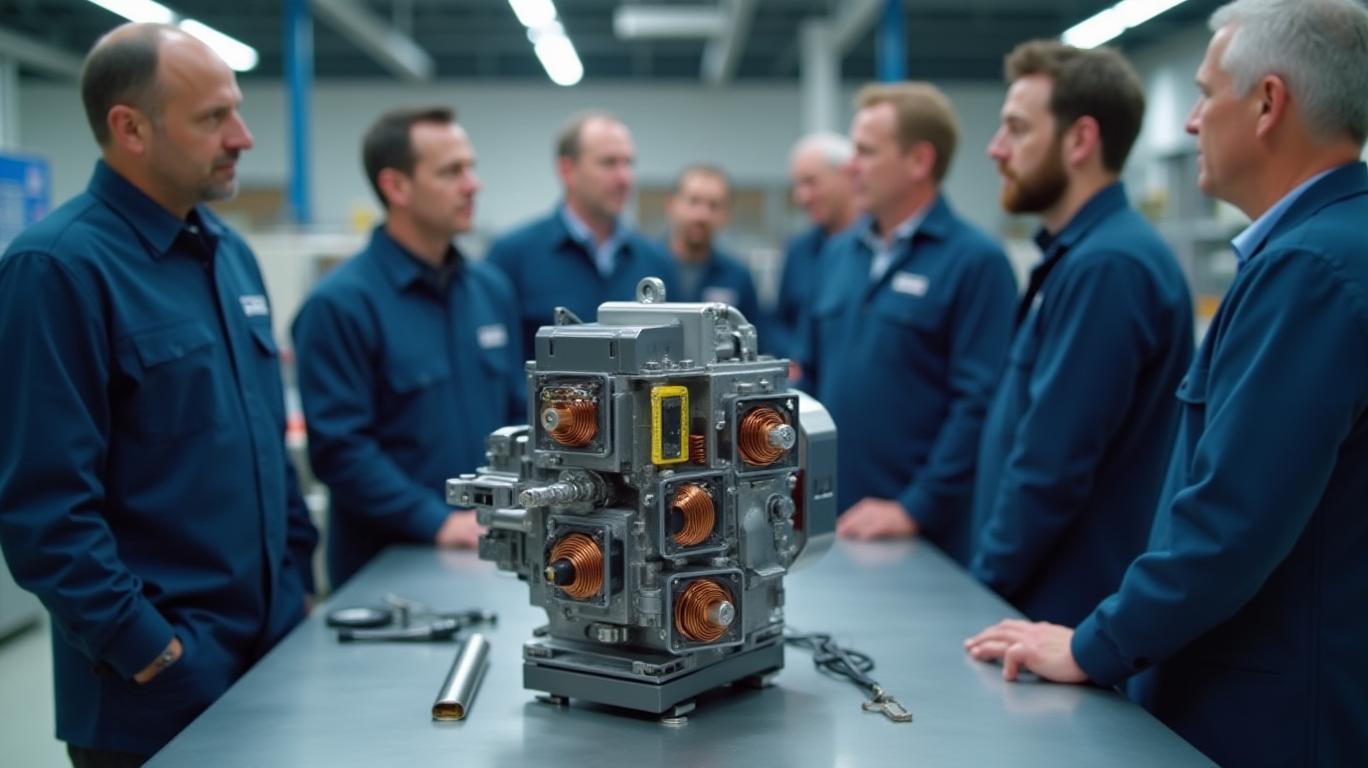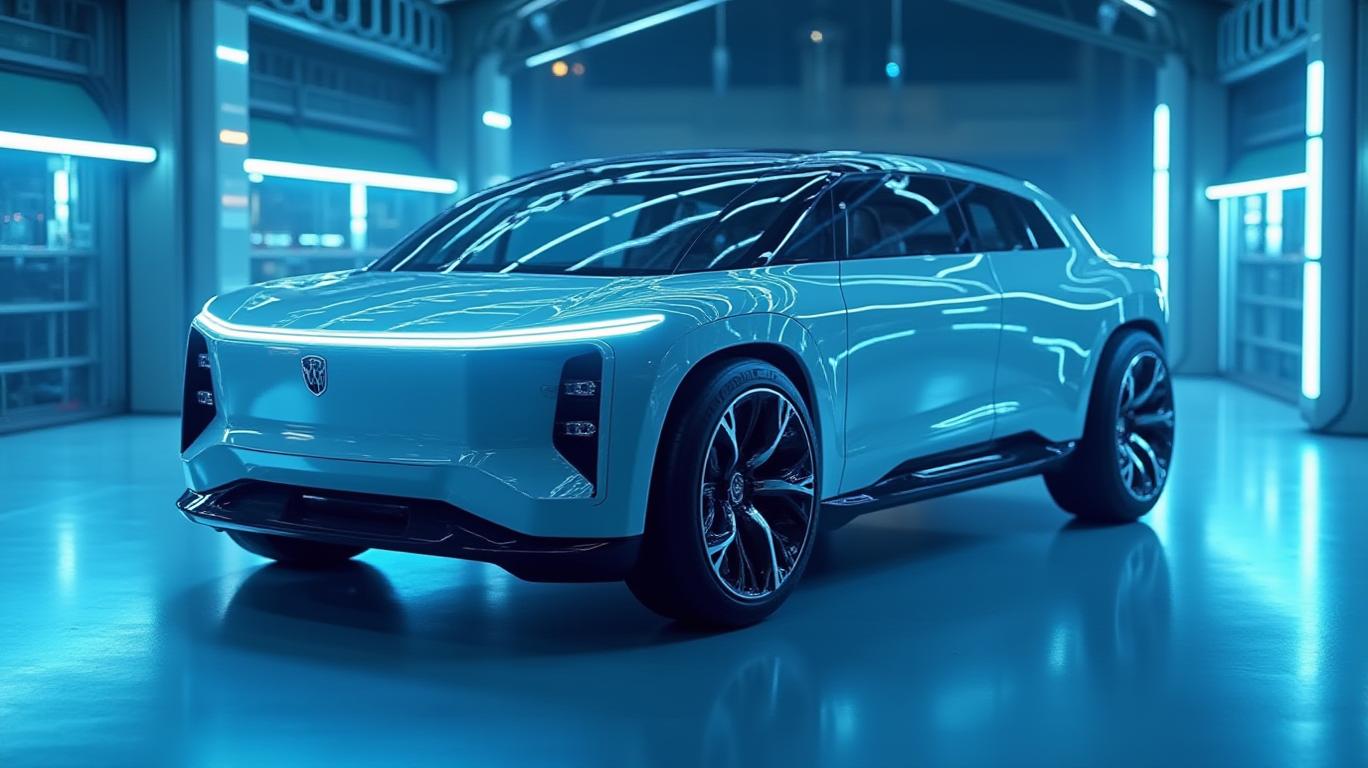Garrett Motion’s Strategic Shift to EV Tech Amid Q1 Challenges
Garrett Motion Inc. (NYSE: MTX) reported its first-quarter 2025 financial results, revealing a complex mix of short-term headwinds and long-term opportunities. While the automotive supplier faced declines in traditional markets, its pivot toward zero-emission technologies and cost discipline provided a glimpse into its future potential.
Ask Aime: Should I invest in Garrett Motion Inc., and what impact will its shift toward zero-emission technologies have on the automotive sector?

Financial Performance: Resilience Amid Declines
Garrett’s Q1 net sales fell 4% year-over-year to $878 million, driven by reduced diesel sales in Europe and softer aftermarket demand in North America. However, the company’s focus on operational efficiency and margin management shone through:
- Adjusted EBIT rose 8% to $131 million, with margins expanding to 14.9% (vs. 13.2% in Q1 2024).
- Gross profit improved to $179 million, with margins climbing to 20.4%, aided by productivity gains and cost controls.
The decline in sales was partially offset by new program launches in gasoline applications and a disciplined approach to capital allocation. Despite a dip in net income to $62 million, the company maintained strong liquidity, with $760 million available (including $130 million in cash) and stable debt of $1.49 billion.
Strategic Wins: Electrification as the Growth Engine
The quarter’s standout achievement was Garrett’s first major series production award for high-speed electric traction motors, set to begin production in 2027 for fully electric axles in heavy-duty trucks. This marks a critical step in its transition from traditional turbochargers to zero-emission technologies.
CEO Olivier Rabiller emphasized the milestone, stating, “We achieved a significant milestone with our first major series production award for zero-emission technologies.” This win aligns with the company’s goal of deriving 50% of R&D spending and 25% of capital expenditures for EV-related projects in 2025.
Shareholder Returns and Capital Discipline
Garrett reinforced its commitment to shareholders by initiating a $0.06 per share dividend ($12 million total) and repurchasing $30 million of its stock, with $220 million remaining under its buyback program. This signals confidence in its financial flexibility, despite a 33% year-over-year decline in net cash from operations to $56 million due to working capital challenges.
Challenges and Risks
The company faces near-term headwinds:
- Currency impacts: A $21 million drag from unfavorable exchange rates (primarily a stronger U.S. dollar) reduced sales.
- Industry shifts: Declines in diesel demand and soft aftermarket sales highlight reliance on traditional markets.
Management also warned of macro risks, including geopolitical tensions and inflation, though it assumes tariff costs will be fully passed through to customers.
Outlook and Investment Considerations
Garrett reaffirmed its full-year 2025 guidance:
- Net sales: $3.3–$3.5 billion (a -3% to +2% constant currency growth).
- Adjusted EBITDA: $545–$605 million, supported by cost savings and new program launches.
The company’s long-term thesis hinges on its ability to capitalize on EV adoption. With 16% BEV penetration expected in light vehicles by year-end, Garrett’s electric motor and inverter advancements position it to benefit from the $22 billion global e-motor market, projected to grow at a 7% CAGR through 2030 (BloombergNEF).
Conclusion: Navigating Now for Tomorrow’s Gains
Garrett Motion’s Q1 results underscore a company in transition: its traditional business faces near-term pressures, but its strategic bets on EV technologies are paying off. The $131 million adjusted EBIT and first electric motor production win demonstrate progress toward its goal of becoming a leader in zero-emission propulsion.
Investors should weigh the short-term sales decline against the long-term opportunity. With $760 million in liquidity and a disciplined capital allocation strategy (including dividends and buybacks), Garrett appears positioned to weather current headwinds.
While the stock’s recent volatility reflects market skepticism about near-term automotive demand, the company’s R&D focus and strategic wins suggest it could emerge stronger in the EV era. For investors with a multi-year horizon, Garrett’s shift to electrification—backed by a robust balance sheet—deserves serious consideration.
In short, Garrett Motion’s Q1 results are a reminder that even in challenging markets, strategic foresight and operational rigor can pave the way for future growth.










